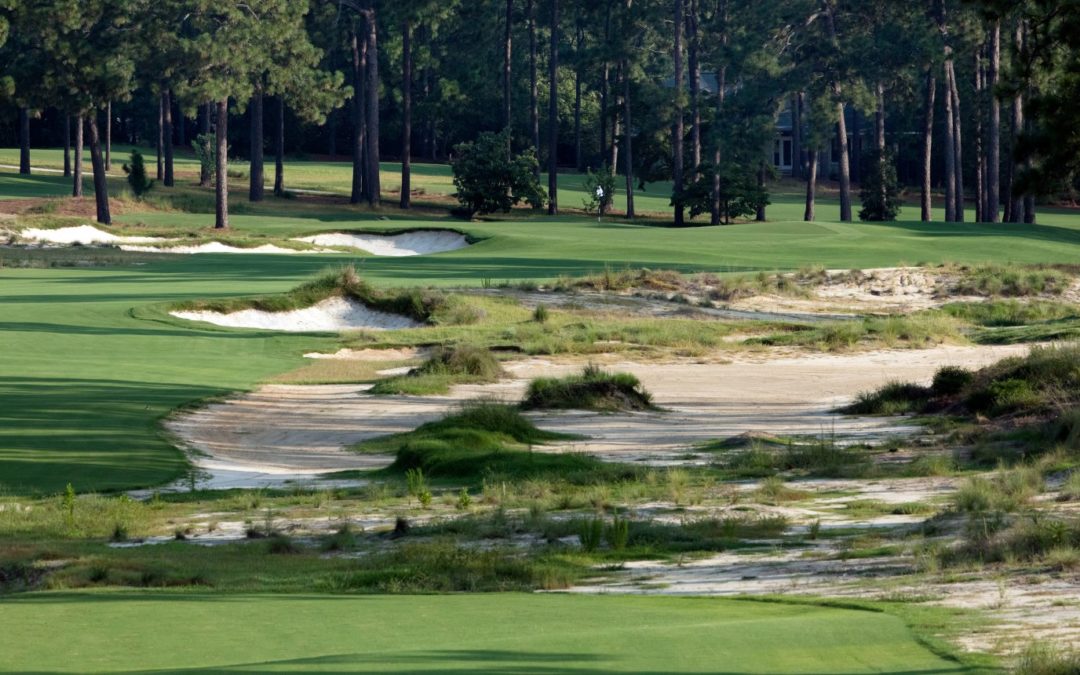Nearly 100 years after ASGCA Founding Member Donald Ross first routed the ground that is now Pinehurst No. 4, the course has undergone what writer Brad Klein has termed a “retrovation,” led by Gil Hanse, ASGCA (Hanse Golf Course Design). During one stretch of the project, Hanse even lived on the Pinehurst grounds at Dornoch Cottage, Ross’ former home.
Klein writes for GolfAdvisor,com:
The mark of a great golf property is that the folks who run it are never content to sit back on their laurels. They always want to improve. Case in point: Pinehurst Resort in the Sandhills of central North Carolina.
Pinehurst No. 4 did not lend itself to textbook restoration because the course had evolved dramatically since the incarnation of Ross’ routing in 1919. The documentation provided by architect/historian Richard Mandell in his book Pinehurst: Home of American Golf (2007) shows at least four major reroutings of No. 4, three of them after Ross’ death in 1948. When Coore and Crenshaw restored No. 2, they wisely chose 1936 as the target year – when the modern routing of that course was achieved in time for that year’s PGA Championship. There was no such “steady-state” arrival of No. 4 as a settled routing. That gave Hanse a lot of latitude. He studied earlier bunker plans, but the bulk of his work, he says, “was restoring the basic landforms and flow of the topography.” He also put the greens back to grade level.
Hanse is known for doing his own shaping work. That means spending his days operating a bulldozer or excavator, invariably with his iPod ear buds blaring while he creates the forms he thinks is appropriate. The work is undertaken with his in-house crew, a firm called Caveman Construction. Hanse’s partner in all of this planning, budgeting and sculpting the last 23 years is Jim Wagner. Their design/build operation is part of a growing movement in modern golf architecture that achieves unique shapes by teasing them out of the dirt rather than designing it all on paper and handing it off to a generic contractor.
Ross designed on the ground, scraping his features out and occasionally building up only the platform called “the fill pad” that contains the putting surface and bunkers at its base. In restoring the original landforms, Hanse brought most of the bunkers back to earth, occasionally blending in a putting surface into the high side of an existing grade and letting the outslope provide a natural feed away from the target line.
The complete article can be found here.

